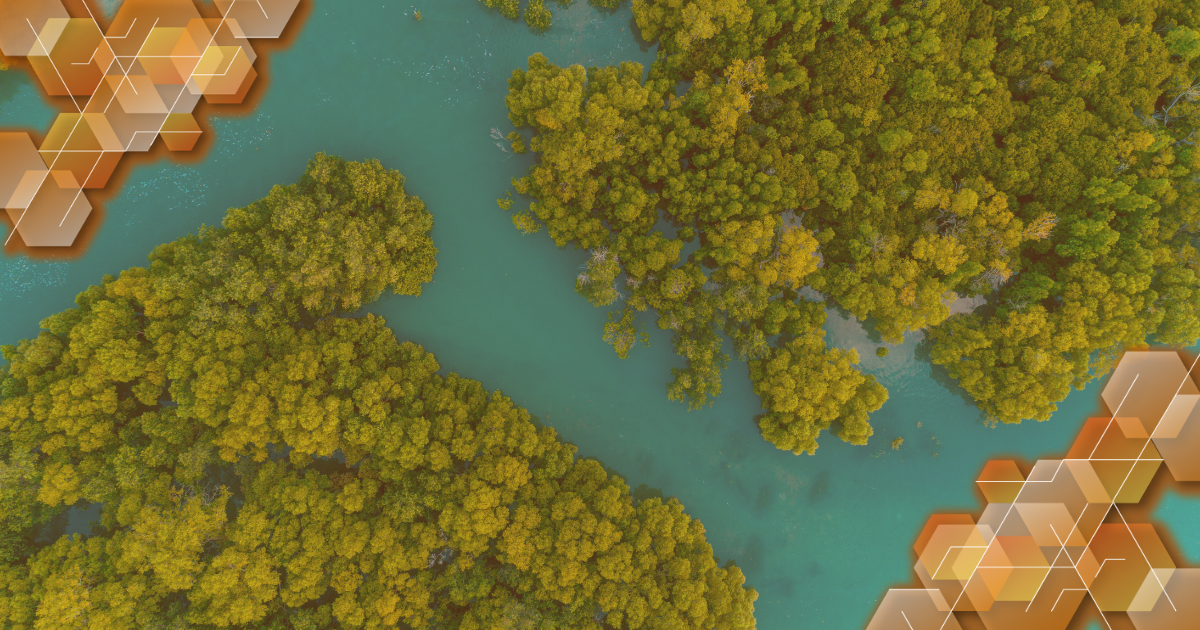
Back to Nature? A Case Study of Nature-based Solutions Implementation on The Coastal Area in Indonesia
11 April 2022
Author : Dominic Oki Ismoyo
Editor : Mizan Bustanul Fuady Bisri
"Back to nature", the slogan is very familiar in our minds, as we easily hear or see it in our daily lives. Either for the benefits of our health, from various healthy food products to cosmetics products, the slogan is usually used to promote a healthy lifestyle in line with nature. However, this slogan does not reflect our whole way of life, which sometimes consumes and even destroys the environment. In addition, our development and technological advances occasionally sacrifice the natural environment.
However, a disrupted environment due to human activity has forced nature to strike back. The last IPCC 6th Assessment Report, "Climate Change 2022: Impacts, Adaptation, and Vulnerability," stated that human-induced climate change has caused widespread adverse impacts and related losses and damages to nature and people beyond natural climate variability. The impact includes more frequent and intense extreme events. Across sectors and regions, the most vulnerable people and systems are disproportionately affected. The rise in weather and climate extremes has led to irreversible impacts as natural and human systems are pushed beyond their ability to adapt.
There are feasible and effective adaptation options to reduce risks to people and nature. However, the feasibility of implementing adaptation options in the near term differs across sectors and regions. There are two kinds of measures we usually go through to mitigate disaster in our cities: hard and soft measures. Hard measures include building structures (sea walls, land reclamation, flood levees, etc.) as defenses to rising sea levels, surges, and floods. In contrast, soft measures include non-permanent structures, non-construction type of activities, and the use of natural systems as the front-line defenses. For the latter, the Ecosystem-based approach and nature-based solutions are now gaining traction.
Ecosystem-based adaptation is increasingly advocated in coastal defense against storm surges, terrestrial flood regulation, urban heat reduction, and restoring natural fire regimes coastline. Nature-based solutions, including ecosystem-based adaptation, can reduce ecosystems' risks and benefit people as long as they are planned and implemented in the right way and in the right place. In coastal systems, nature-based solutions, including ecosystem-based adaptation, can reduce impacts on human settlements due to sea-level rise.
One of the infamous examples of this nature-based solution is the implantation of mangroves on the Indramayu coast, Indonesia, to prevent erosion and resettle the missing sediment. The journey before and after the implantation experience in the Karangsong Mangroves Centre is worthy of a story.
Around 80-the 90's people of Karangsong benefited from the lush mangrove area and converted it into ponds. The conversion transforms all mangrove trees into ponds for fish and shrimp. For some early time, the business is going well and gives profit to the people. But, after a while, the sea gives relentless waves, leading to coastal erosion. As the erosion grows, ponds are swept away and threaten the settlement near the coast. Moreover, the waves slowly erode buildings. Thus, the loss of livelihood for the people of Karangsong becomes worse. The community also cannot build complex infrastructure, such as seawall, as it is too expensive.
In 2008, the community learned to grow back some of the mangroves in an initial effort to protect the few left ponds. Fortunately, they soon discover that mangroves are the key to saving their livelihood. In addition, mangrove forests play a critically important role in coastal protection. They can dissipate wave energy, lower flood risk, and minimize erosion. Mangrove forests, however, are threatened by several natural and man-made factors, including storm events.
Mangroves can recover post-storm with minimal or no intervention if the elevation and hydrology are not profoundly affected (for example, by sediment loss). Mangroves act like weed species in many respects and can grow quickly in an intertidal environment with few competitors. In 2015, the Karangsong Mangroves area was regarded as an ecotourism site that offers recreational and educational places to preserve the environment. Since then, the local government of Indramayu has also mandated schools in the area to visit the mangrove conservation area as part of education for nature protection.
Although research publications about coastal floods and abrasion are significantly lower than tsunami publications, the frequency of these disaster events is way higher. Therefore, this topic is vital to be studied further in relevant areas. Nature-based Solutions (NbS) informed by innovative research is the best way to mitigate coastal floods and abrasion. The NbS topics on the coastal ecosystem has risen steadily since a decade ago. However, research publications about NbS topics on coastal ecosystems in Indonesia comprise only 5,88% of the total coastal disaster research. Therefore, there is a clear need to further increase the number of NbS related research, specifically in coastal ecosystems, to support coastal disaster risk reduction and adaptation policy and practices.
-----
References
- IPCC. (2022). "Sixth Assessment Report: Working Group II - Impacts, Adaptation, and Vulnerability". https://www.ipcc.ch/report/ar6/wg2/resources/spm-headline-statements
- Oni, Oni. (2019). "Success story Rehabilitasi Ekosistem Mangrove di Pantai Karangsong Kabupaten Indramayu". Jurnal Pengelolaan Sumberdaya Alam dan Lingkungan (Journal of Natural Resources and Environmental Management). 9. 787-796. 10.29244/jpsl.9.3.787-796.
- Beck, M. W., N. Heck, S. Narayan, P. Menéndez, S. Torres-Ortega, I. J. Losada, M. Way, M. Rogers, L. McFarlane-Connelly. (2020). “Reducing Caribbean Risk: Opportunities for Cost-Effective Mangrove Restoration and Insurance.” The Nature Conservancy, Arlington, VA.
- https://www.cnnindonesia.com/gaya-hidup/20190930170958-269-435399/wisata-edukasi-di-kawasan-mangrove-karangsong
- https://www.liputan6.com/photo/read/2413442/traveling-seru-di-mangrove-karangsong-indramayu?page=1
-----
Additional information:
The contents of the article, both the chosen point of view and the ideas included are the full responsibility of the author. This article is not intended to convey the official views of CARI!





